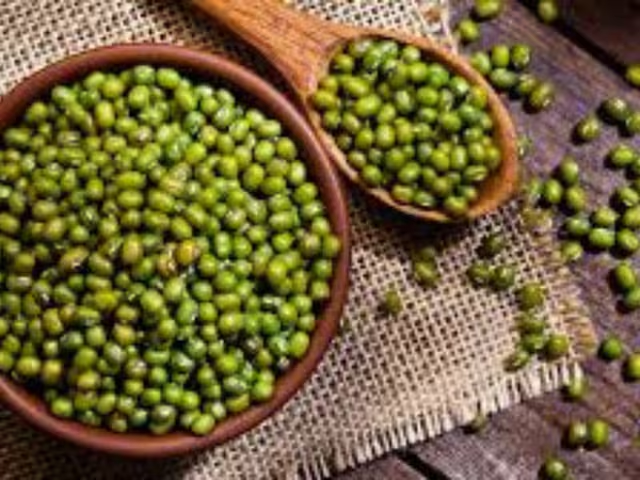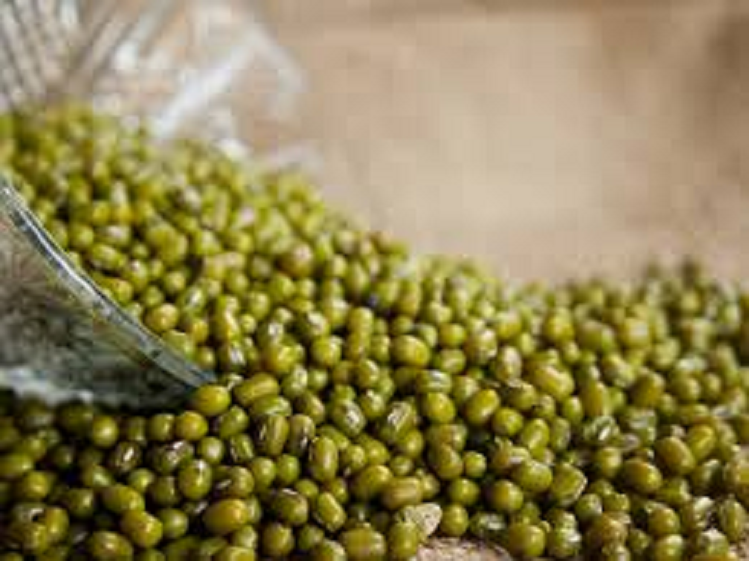The only pulse in the world that eats 'human flesh', know how much truth is there in it
- bySherya
- 20 Mar, 2025

Dal which eats 'human flesh': Do you know that green moong dal is called 'human flesh eating' dal. This does not really mean that this dal eats flesh. It means that it removes toxins and fibers from the body...

Moong dal has been an important part of Indian diet since ancient times.
Highlights
- Green moong dal is very helpful in reducing weight
- Moong dal removes toxic elements from the body
- Moong dal is an excellent source of protein for vegetarians
Dal which eats 'human flesh': Do you know that there is a dal that eats human flesh? Isn't it surprising? This question has been asked once in the Indian Administrative Service (IAS) interview. But this question is interesting. Because its special thing is that this dal is considered the most nutritious and easily digestible. That is why it is given to everyone from patients to children. When this dal is considered nutritious and healthy, then how is it a flesh-eating dal? First let us know which dal is this?
Actually this is green moong dal which is commonly eaten in all houses. It is considered a treasure of nutrients. But it is important to understand the fact that it eats human flesh. A special type of protein is found in green moong dal, which is called 'proteolytic enzymes'. These enzymes help in improving our digestion. Their main job is to remove impure elements and dirty flesh from the body. Which is in the form of accumulated fat and dead cells in the body.
Helpful in reducing weight
That is why when it is said that moong dal 'eats human flesh', it does not really mean that it is actually eating someone's flesh. This is said as a proverb. Its real meaning is that moong dal works to eliminate toxins, waste materials and excess fat accumulated inside the body. This dal is considered best for weight loss. The body of those who consume it remains healthy. This dal not only helps in reducing weight, but also controls high blood pressure, digestive problems and other health problems.
Moong dal is a powerhouse of protein in food.
Beneficial for vegetarians
No matter how much it is said that it 'eats human flesh', it has special significance for vegetarians. It is an important part of vegetarian food. Because moong dal is an excellent source of protein for vegetarians. Therefore, including moong dal in your diet is very beneficial for health. Despite the claim of eating meat, this dal is completely vegetarian and is completely safe and beneficial for vegetarians. Adequate amount of fiber is found in green moong dal. Eating it makes the stomach feel full for a long time.
What other benefits do you get? People who consume moong dal have a well-shaped body and their digestive system also becomes strong. Due to the fiber present in it, the stomach feels full and the habit of overeating decreases. It contains minerals like potassium and magnesium, which help in balancing high blood pressure. Being nutritious and easily digestible, moong dal is an ideal diet for children to the elderly. It is suitable for people of all ages.
Nagaur has the highest production.
Moong dal crop is grown the most in Rajasthan. But Nagaur is number one in Rajasthan. 43% of the total moong production of Rajasthan is produced in Nagaur district alone. In Nagaur district, Kharif crop is grown in an area of about 12 lakh, 62 thousand hectares in a year. In which moong is cultivated in 6,26,633 hectares in a year. In Nagaur district, most of the moong cultivation is done in some areas of Merta, Rian, Degana, Marwar, Mundwa, Jayal, and Parbatsar tehsil. Less water is required for the cultivation of moong dal. It grows well even in sandy soil.
Moong dal , present in India since ancient times,
has been grown in India since ancient times. It is said that it was discovered about four thousand years ago in the area of present-day Karnataka. The botanical name of moong dal is Bigna radiata. It is a plant of the Leguminaceae family. Moong dal has been an important part of Indian food since ancient times. Moong dal is mentioned in ancient texts of Ayurveda. Moong dal is also mentioned in Buddhist literature. The cultivation and use of moong dal later spread to South-East Asia and China.



